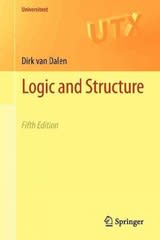Question
The Kyoto Protocol was signed in 1997, and required countries to start reducing their carbon emissions. The protocol became enforceable in February 2005. In 2004,
The Kyoto Protocol was signed in 1997, and required countries to start reducing their carbon emissions. The protocol became enforceable in February 2005. In 2004, the mean carbon dioxide emission was 4.87 metric tons per capita. Table below contains a random sample of carbon dioxide emissions from 34 countries from a recent study. Is there enough evidence to show that the mean carbon dioxide emission is now lower than it was in 2004? Test at the 4% level.
| Carbon Dioxide Emissions (in metric tons per capita) |
|---|
| 0.28 |
| 2.27 |
| 1.42 |
| 0.14 |
| 0.79 |
| 1.45 |
| 7.48 |
| 2.45 |
| 1.8 |
| 2.86 |
| 3.02 |
| 5.36 |
| 3.45 |
| 5.86 |
| 2.87 |
| 6.02 |
| 1.36 |
| 7.93 |
| 5.93 |
| 7.84 |
| 3.45 |
| 4.56 |
| 0.86 |
| 0.06 |
| 2.44 |
| 6.72 |
| 1.46 |
| 5.94 |
| 0.78 |
| 3.46 |
| 2.62 |
| 1.35 |
| 0.2 |
| 5.85 |
P: Parameter
What is the correct parameter symbol for this problem? ? n N X p X s p What is the wording of the parameter in the context of this problem? Select an answer All countries A randomly selected country The carbon dioxide emissions of a randomly selected country The mean carbon dioxide emissions in 34 randomly selected countries 34 randomly selected countries The mean carbon dioxide emissions of all countries H: Hypotheses
Fill in the correct null and alternative hypotheses:
H0: ? p n X s N X p ? = > < ______ metric tons per capita HA: ? X N n X p s p ? = < > ______ metric tons per capita A: Assumptions
Since Select an answer qualitative quantitative information was collected from each object, what conditions do we need to check? Check all that apply.
- N20n
- outliers in the data
- is unknown
- no outliers in the data
- n(1p)10
- n(1p)10
- is known
- n30n30 or normal population
- np10np10
- n(p)10
Check those assumptions: 1. Is the value of known? ? yes /no
2. Are there any outliers? Select an answer No, the histogram shows no outliers. Yes, the histogram shows outliers. No, the normal probability plot shows no outliers. No, the modified boxplot shows no outliers. Yes, the normal probability plot shows outliers. Yes, the modified boxplot shows outliers.
3. n =______ which is ? <______
Is it reasonable to assume the population is normally distributed? Select an answer Not necessary to check since the sample size is at least 30. Not necessary to check since the sample size is less than 30. Yes since the normal probability plot is roughly linear with no outliers. Yes since the normal probability plot is roughly bell-shaped with no outliers. No, since the normal probability plot is not roughly linear. No, since the normal probability plot is not roughly bell-shaped. N: Name the test
The conditions are met to use a Select an answer 2-Proportion Z-Test 1-Proportion Z-Test Paired T-Test T-Test 2-Sample T-Test . T: Test Statistic
The symbol and value of the random variable on this problem are as follows (round to 4 decimal places): ? N n X p X s p = ______
The formula and value of the test statistic are as follows:
Round the mean and standard deviation to 4 decimal places and the final answer to 2 decimal places. t=Xsn=t=X-sn= (((( - )) // // ))=))= O: Obtain the P-value
Report the final answer to 4 decimal places. It is possible when rounded that a p-value is 0.0000 P-value = ______
M: Make a decision
Since the p-value ? = < > ______ , we Select an answer reject H0 fail to reject HA fail to reject H0 accept H0 reject HA .
S: State a conclustion
There Select an answer is is not significant evidence to conclude Select an answer All countries The mean carbon dioxide emissions in 34 randomly selected countries The carbon dioxide emissions of a randomly selected country 34 randomly selected countries A randomly selected country The mean carbon dioxide emissions of all countries Select an answer is less than differs from is more than is equal to ______ metric tons per capita
Step by Step Solution
There are 3 Steps involved in it
Step: 1

Get Instant Access to Expert-Tailored Solutions
See step-by-step solutions with expert insights and AI powered tools for academic success
Step: 2

Step: 3

Ace Your Homework with AI
Get the answers you need in no time with our AI-driven, step-by-step assistance
Get Started


